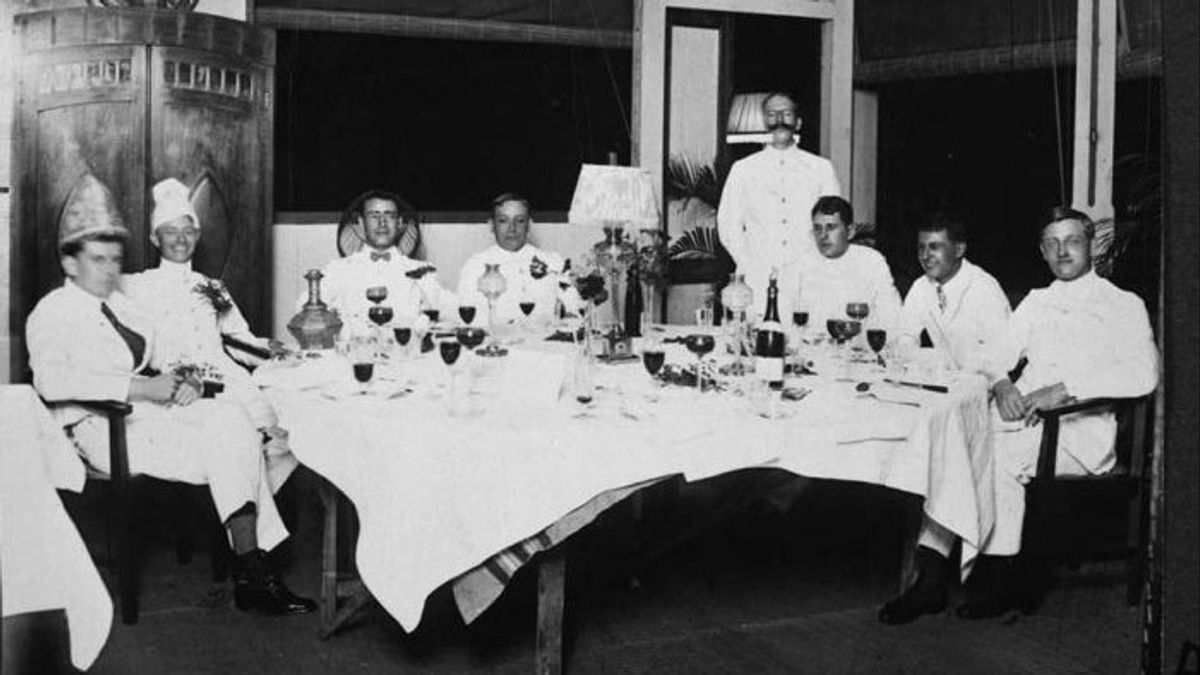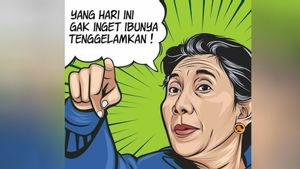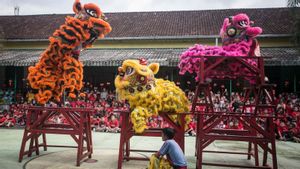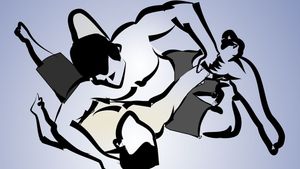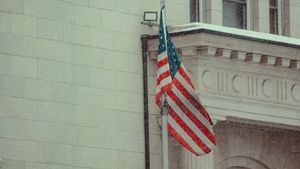JAKARTA - The influence of ethnic Chinese in the archipelago is so great. The existence of the liquor industry is proof of this. In the alcoholic industry, from upstream to downstream, they have everything. The distillation of arak has also been a major industry in Batavia since 1611. The Batavian arak industry has become famous throughout the country, especially in Asia and most of Europe.
The arak industry and the Chinese in Batavia are two things that cannot be separated. In a philosophical sense, only Chinese people can distill quality arak. It didn't matter who owned the distillery, be it European or Chinese, it was unlawful to appoint someone other than ethnic Chinese to boil the wine. They determine quality as well as taste, whether it's for wine made from rice, molasses and sap.
“The Batavia arak industry, which is of good quality, is also held by the Chinese. The process is that about 70 pounds of sticky rice are placed in a barrel, around which one hundred cans of water are poured, and 20 cans of liquid sugar are poured on top. After sitting for two days, it is transferred to a bigger barrel, with the addition of four hundred cans of water and one hundred cans of liquid sugar, ”wrote the Lieutenant Governor of the Dutch East Indies, Thomas Stamford Raffles in his masterpiece, The History of Java (1817).
Raffles added that the process is sometimes carried out in open air. The refining process is up to three times. The third distillate is called sichew, second, tanpo, and the first still: kiji. The whole process until all the stills were finished in no more than ten days. The container used should not be arbitrary. It should be a copper container six inches above the barrel level. That's the main way to make quality wine.
To find out the quality, Chinese people usually burn a little liquid alcohol. Later, a little or a lot of leftover burning becomes an indicator of the alcohol level of the arak. The historian, Denys Lombard, in the book Nusa Jawa: Cross-Culture Volume 1 (2008) states that alcohol levels usually vary. There is arak that contains 60 percent alcohol. usually aimed at the local market. There was also a high-quality, 60 percent alcoholic liquor, which was sold to the Dutch. Meanwhile, category three arak is the result of a mixture of water. Its alcohol content is only 50 percent.

The arak refining industry at that time was quite large because in 1710 the sugar factory in Batavia had reached 130 out of 84 entrepreneurs in Ommelanden (an area outside Batavia). The proportion, 79 belonged to Chinese people, four Dutch people, and one Javanese. Sugar cane mills too. It was recorded that sugar cane mills in Batavia reached 131 factories. Among them, 48 of them are in the west of the Ciliwung River, and 82 of them before the east of the Ciliwung River.
Entering 1793, the number of arak factories had reached 20, with an average production of up to one hundred drums per day. Then, making wine with top quality was what made it possible at that time in Batavia. Because of its size, Batavian arak is well known throughout Asia, because most of the arak is exported to Bengal (Bangladesh), Coromandel and Sri Lanka.
One of those who liked him was the captain of the British merchant ship, the famous Woodes Rogers. Apart from praising Batavia as one of the most pleasant cities in the world, he also praised Batavia's wine as the most delicious liquor.
"Our people embrace and bless themselves because they managed to arrive at a place where the punch-parches were so extraordinary," said Woodes Rogers as quoted by Bernard HM Vlekke in the book Nusantara (1959).
The Netherlands loves to get drunkBatavia, apart from being known as a producer of quality alcohol, the Dutch who inhabited the city were also known to be fond of drinking. Even the name Batavia, which is a reminder of the Batavier tribe - the ancestors of the Dutch nation - was coined when Dutch soldiers were drunk. Bernard HM Vlekke confirmed this. He emphasized that in the midst of the conquest of Jayakarta, the Dutch soldiers held revelries accompanied by lots of wine and women.
After that they pray that they can win the battle. Right in the middle of the party, the Dutch officers realize their fort has no name. One of the soldiers then shouted the name "Batavia." This is the origin of the city of Batavia, which accidentally started in the middle of a Dutch alcoholic party.
“Suddenly at a victory party there was a drunken VOC seldadoe shouting the words: Batavia .. Batavia. I don't know what the process is, finally the city, which is located at the mouth of the Ciliwung river and its surroundings, has finally been named Batavia, "added one of the important figures in the writing of Jakarta history, Alwi Shahab in the book Time of the Netherlands, Drunk was Born Batavia (2013).
[/ read_more]

Long story short, with the proliferation of wine refineries, the habit of drinking has increased. It is not surprising that soon drinking establishments appear along the Ciliwung River. If in 1744 the number of stalls was only a dozen, by 1777 the number had significantly increased to 102. In fact, at that time there were not so many Dutch people.
“What was served at that time was not only wine, but also Dutch and English, Spanish and South African beers. It is not surprising that the Dutch authorities became concerned. In the drinking establishments, there were many fights due to intoxication. Oral wars often end in bloody fights, ”writes in the book Batavia: The Story of Jakarta Tempo Doeloe (1988).
Therefore, the Dutch authorities always warned those who had just come to the Indies to stay away from alcohol. No exception for those who served a Dutch soldier. According to the narrative of one of the Dutch soldiers from Amsterdam HCC Clockener Brousson. Those (soldiers) who had just arrived in Batavia were advised to avoid alcohol before walking freely on the streets of the city which was nicknamed the Queen of the East.
“I myself still remember Major Bootsma's warning not to be tempted to get drunk too. Later, in the field I can see these "bitter" heroes, usually almost out of mind, reportedly getting sick frequently, filling hospitals, and keeping gravediggers busy, "said HCC Clockener Brousson in the book Batavia Awal 20th Century (2004).
MEMORY Other[/ read_more]
The English, Chinese, Japanese, Arabic, and French versions are automatically generated by the AI. So there may still be inaccuracies in translating, please always see Indonesian as our main language. (system supported by DigitalSiber.id)
